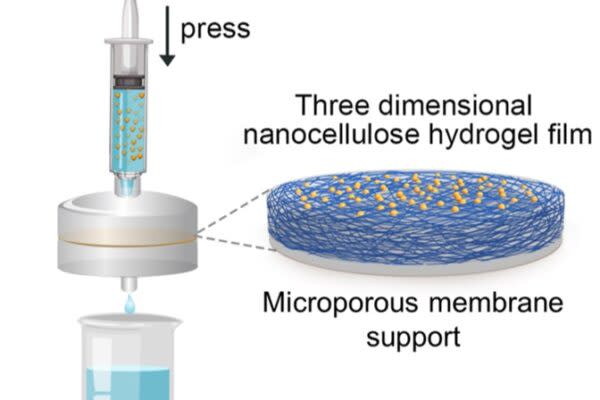Bottled water contains tiny pieces of plastic; this system may prevent you from drinking it
AUSTIN (KXAN) — You may want to think twice before taking a sip from a bottle of water. A recent study found that nanoplastics, small flecks of plastic a thousand times smaller than a human hair, are likely floating around in your drink.
The study was published in January in the journal Proceedings of the National Academy of Sciences. Researchers from Columbia University looked at the three most popular brands of water sold in the United States and found that the bottles contained on average 240,000 plastic particles. 90% of these are considered nanoplastics.
“We’re talking about one micron or micrometer to one nanometer,” said Zhanfei Liu, Ph.D. with the University of Texas’ Marine Science Institute.
According to Liu, consuming nanoplastics and microplastics, a larger form of degraded plastic, has caused trouble for wildlife in our oceans.
“The animal may feel full but they are not. They can starve to death because there are no nutrients,” Liu said.
Nano and microplastics can also host bacteria, which can be dangerous for things that consume them directly or indirectly by eating something that contains them.
Drinking a bottle of water containing thousands of nanoplastics may not be the best thing. A recent study at the University of Texas might have a solution.
How can we filter out microplastics and nanoplastics?
Professor Guihua Yu with UT’s Material Science department has been working with a new type of material for some time now: hydrogel.
Hydrogels have some unique properties, including having a tightly interlaced netting and being hydrophobic, meaning they repel water.
Last year, Yu and his team used this hydrogel to construct rollers that could collect oil from the ocean after a spill. Now they’re using it to create a filtration system capable of cleaning water down to the nano level.

“Getting rid of fine particles from contaminated water is very challenging,” Yu said.
The hydrogel is laced together like a basket. When water passes through it, using a syringe, plastic and other particles get trapped in this weave. The cleaned water passes right through.
“This actually is very easily accessible and extremely scalable and extremely also low-cost material to start with,” Yu said.
The filter only requires a syringe, hydrogel and something to collect the water once it passes through. Yu estimates the filter could be used at home and would cost about $2.
Yu’s work with hydrogel was published in the science journal Nature Sustainability in January. He next plans to scale the filtration system up, so it could be used on a larger project and commercialized.
How are microplastics and nanoplastics made?
Plastic can last for a very long time. It is flexible, moldable and highly resistant, but it does degrade and break apart.
“As you can imagine, they tend to accumulate if they don’t degrade,” Liu said.
Plastic left in landfills or the open ocean does accumulate. Liu notes that nanoplastics haven’t been located in the open ocean yet due to technological challenges. Microplastics have been found in the bodies of sea life.
While many nanoplastics are created through degradation, we actually make them ourselves. Nanoplastics can be found in toothpaste and makeup, Liu said.
For the latest news, weather, sports, and streaming video, head to KXAN Austin.
